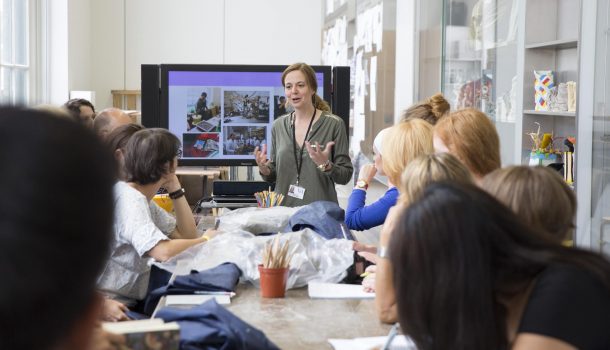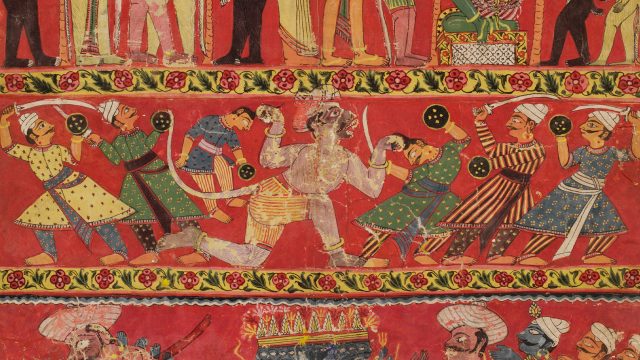
‘If you are interested in something, you will focus on it, and if you focus attention on anything, it is likely that you will become interested in it. Many of the things we find interesting are not so by nature, but because we took the trouble of paying attention to them.’
― Mihaly Csikszentmihalyi, Finding Flow: The Psychology of Engagement with Everyday Life
Not to long ago, I went to Liverpool’s Bluecoat Gallery to join a panel on the topic of Professional Resilience as part of the wrap up of Boosting Resilience, a 2 year programme delivered by The Culture Capital Exchange, The Centre for Enterprise at Manchester Metropolitan University and The Centre for Creativity in Professional Practice at Cass Business School, City, University of London, and supported by Arts Council England. The programme focused on how cultural institutions can harness their IP to strengthen their financial sustainability, and in this post I’m reflecting on what I’ve learned from our participation in the programme. The quote above, by management psychology guru Mihaly Csikzentmihalyi, speaks to a critical aspect of professional resilience: the ability to adapt to the needs of new professional contexts by seeking out and giving attention to new, compelling and challenging aspects of practice.
When I signed up for the Boosting Resilience programme, the kind of resilience that was uppermost in my mind was institutional financial sustainability. Having worked for a decade at London’s Design Museum, and from 2014 – 2016 been part of the directorate team that mobilised the museum’s new premises in Kensington, the financial exigencies of a major capital project had instilled a hefty dose of business acumen into my professional practice. I was keen to explore and develop this further in a broader cultural and creative context.
The project that aligned with the Boosting Resilience programme involved developing a ‘Design for Business’ B2B (Business-to-Business) programme that would harness the content and facilities IP of the Design Museum to prototype a new strand of professional learning, centred on the value of ‘design thinking’ for business. This was a partnership venture with the Royal College of Arts’ Executive Education business unit. The prototype workshops were delivered as a ‘test and learn’ opportunity with a Learning and Development team from a global financial institution, sourced through our events team. Truth be told, I found the most testing aspect to be the level of planning and the minutiae of delivery needed by the client. This proved to be somewhat at odds with the culture and ethos of our adult learning programmes: the client wanted a full-day plan broken down into 15 minute blocks, with their own learning framework embedded into the material that I was supposed to deliver.
After a couple of iterations we resolved this ‘culture clash’ between the ethos of museum learning and that of corporate learning and development through a co-delivery model. This programme continues to be taken forward by the Design Museum, as in spring 2018 I took up my current role as Director of Learning and National Programmes here at the Victoria and Albert Museum.
My programme portfolio includes the V&A Learning Academy (soon to be rebranded as V&A Academy), an extensive adult learning profit centre for B2B and B2C (Business-to-Consumer) programmes that realises the extraordinary creative and cultural assets of the institution as the world’s leading museum of art, design and performance.
One of my first steps was a strategy review, undertaken by a consultant with that potent mix of commercial and content expertise that you might think of when you think of, say, Google Academy, Guardian Masterclasses, and similar programmes. This included a review of current operations, assessing the potential for the Learning Academy to grow, current and future market conditions, and the current opportunities for – and barriers to – expansion. We conducted staff interviews – with Programme Producers, Digital, Marketing and other teams – market research, and a staff workshop to map out priorities and future objectives. The strategic review covered all aspects of the Learning Academy’s work: leisure learners, continuing professional development, conferences and study days across B2B (museum and heritage / creative industries / corporate sector) and B2C – lifelong learners who are seeking creative enrichment opportunities through art, craft and design workshops and art and design history courses drawing on the breadth of the V&A collection.
Undertaking a SWOT analysis (Strengths, Weaknesses, Opportunities, Threats) enabled us to identify the V&A brand’s enormous potential strength in this market, with strong opportunities to reach new audiences, diversify into new subject areas and deliver courses in multiple locations and formats. Our draft strategy sets out four key priorities for the V&A Academy to deliver growth and profitability. First, we must develop a strong brand and set of values that cuts across all assets and deliveriables. Secondly, we must move towards a unique creative learning style to give cut-through in an increasingly crowded market. Third, we will make sure that all activities are templated and scalable for ease of roll-out. And finally, we aim to reach new audiences and new markets with internal and partnership activity.
Participating in the Boosting Resilience programme was a launch pad for me to develop B2B activity in the cultural context. At the V&A this is underpinned by the core tenets of V&A learning that aims to inspire, enrich and empower learners. The uncertain external context of Brexit, a decade of austerity and increasing competition in a crowded market demands that such programmes speak with authenticity to the unique material and intellectual assets of the organisation. At the inception of the programme the language of profit and loss, return on investments and Joint Venture Partnerships meant little to me in the context of cultural learning. But now, having paid attention to the sweet spot where content meets commerce, I find myself increasingly interested in the manifold opportunities that the museum can generate to build its financial resilience. An area I was somewhat agnostic about has become increasingly part of my professional toolkit. Next month we welcome Ian Ellard to lead the Academy team, joining us from Faber Academy – we are looking forward to his blog posts – perhaps woven across a variety of fictional genres?!
In the meantime, I am interested to hear what B2B initiatives you or your organisation might be developing…



Glad to read this informative post. Thanks